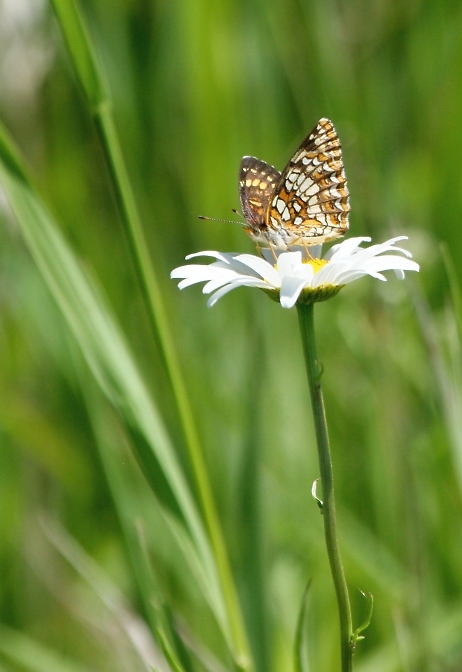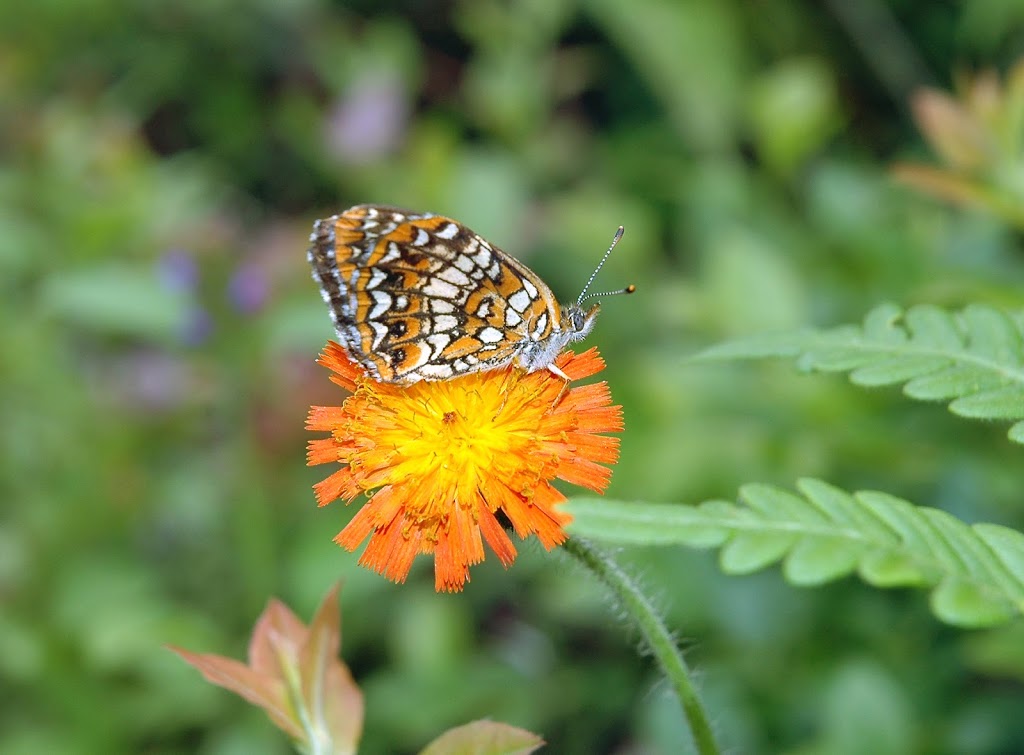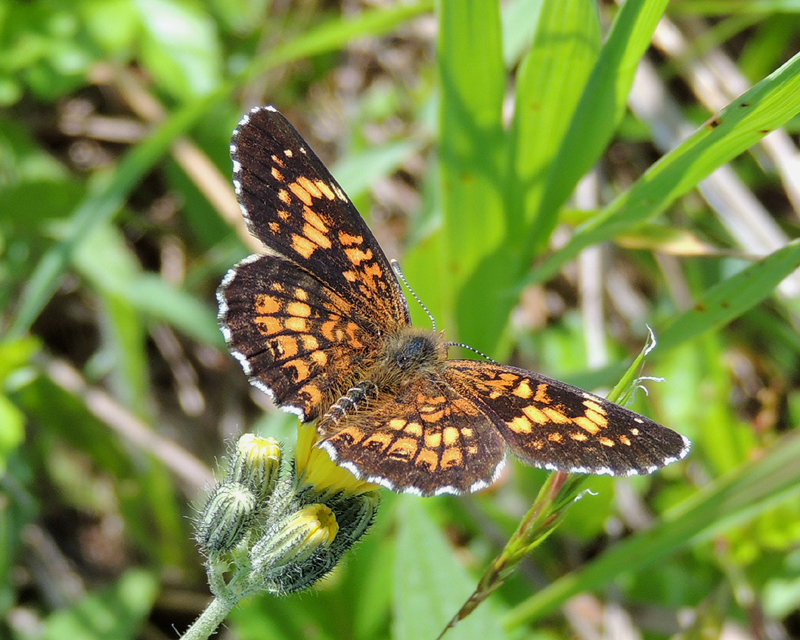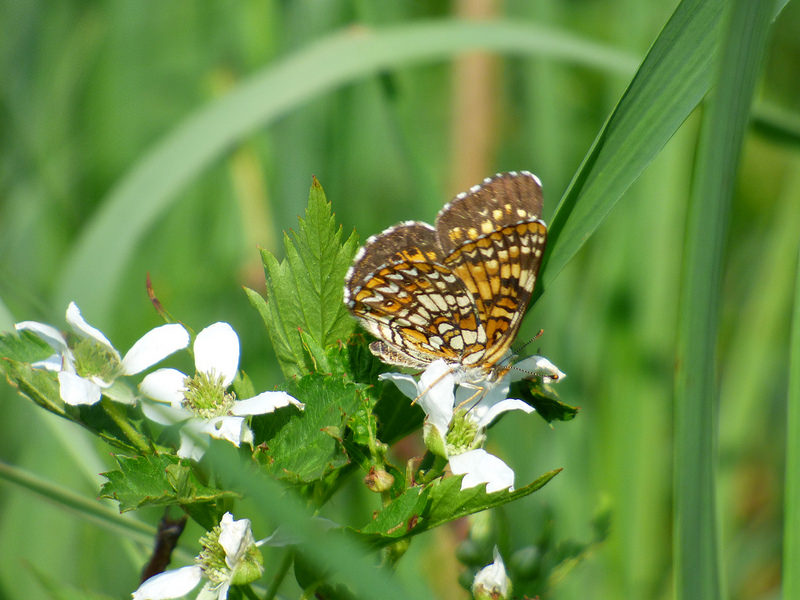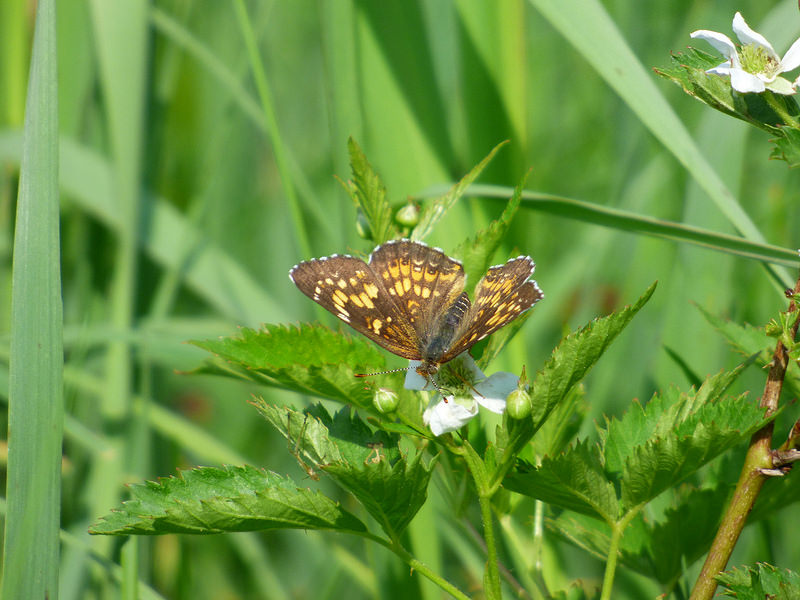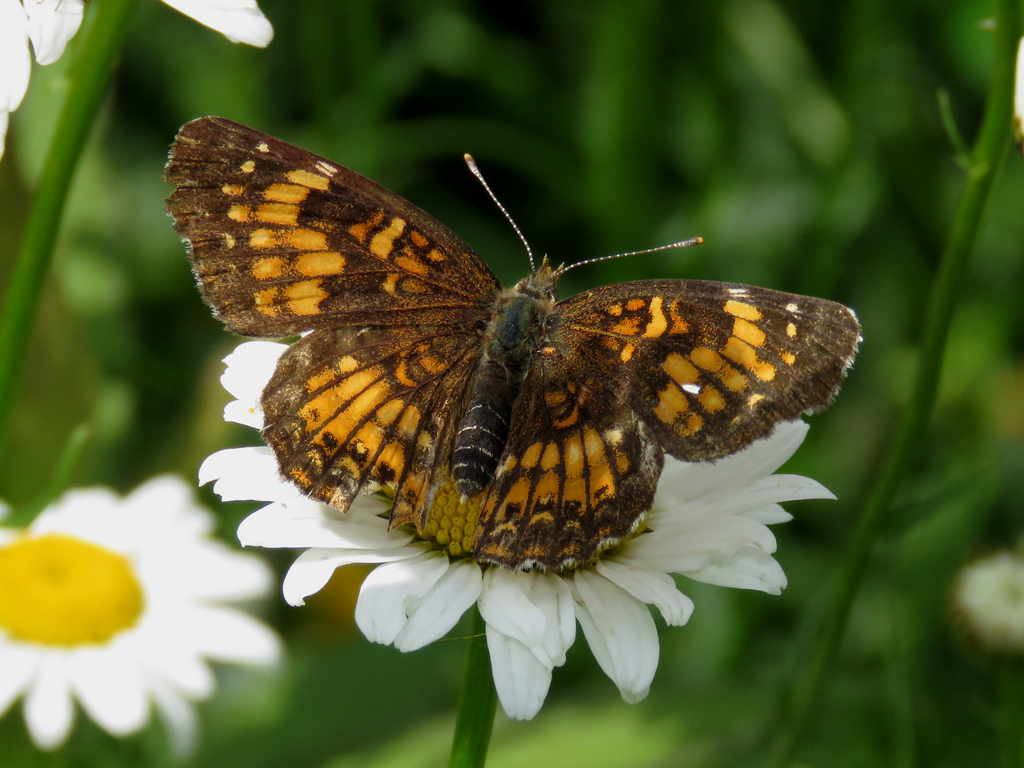Map Snapshot



38 Records
Status
Harris's Checkerspot (Chlosyne harrisii) is a northeastern butterfly of bogs, wetlands, and wet meadows. It occurs in Maryland only in Garrett and Allegany Counties, although its host plant may be found somewhat more widely. This butterfly is considered threatened and state rare (S2) in Maryland. It flies from late May through about mid-June, and is univoltine (Butterflies of Maryland: A Biological Summary and Checklist by Lynn Davidson & Richard Smith).
Relationships
Harris's Checkerspot uses Parasol Whitetop (also called Flat-topped White Aster) (Doellingeria umbellata) as a larval host.
Seasonality Snapshot
Source: Wikipedia
| Harris's checkerspot | |
|---|---|

| |
| Scientific classification | |
| Domain: | Eukaryota |
| Kingdom: | Animalia |
| Phylum: | Arthropoda |
| Class: | Insecta |
| Order: | Lepidoptera |
| Family: | Nymphalidae |
| Genus: | Chlosyne |
| Species: | C. harrisii
|
| Binomial name | |
| Chlosyne harrisii | |
Chlosyne harrisii, or Harris's checkerspot, is a member of the family Nymphalidae that is found in North America. They range from the Canadian Atlantic provinces, excluding Newfoundland and Labrador, to Manitoba and North Dakota south to West Virginia and Ohio.[1] They can often be seen in bogs, meadows and almost anywhere else its host plant occurs.[2] The typical elevations for this species range from 0 to 1,742 feet (531 m).[3] It is listed as a species of special concern and believed extirpated in the US state of Connecticut.[4]
Description
[edit]The adult is often confused with another member of the same genus, the silvery checkerspot (Chlosyne nycteis).[5] The adult's wingspan is 3.6–5.1 cm. The upperside of the wing is orange with black markings. The underside of the wing has a single red-orange stripe and a reddish-orange, white and black marked pattern on the rest of the hindwing.
Life cycle
[edit]There is one flight which occurs between June and July. The caterpillar of this species feeds on the flat-topped white aster (Aster umbellatus) while adults feed on flower nectar. The female lays eggs in a cluster formation under the leaves of its host plants.[1] The caterpillar overwinters during its third instar.[6]
References
[edit]- ^ a b c "Species Detail - BMONA". Archived from the original on 2008-02-10. Retrieved 2009-11-16.
- ^ "Harris' Checkerspot-Wisconsinbutterflies.org". Retrieved 2009-11-16.
- ^ "Chlosyne harrisii". Retrieved 2017-04-07.
- ^ "Connecticut's Endangered, Threatened and Special Concern Species 2015". State of Connecticut Department of Energy and Environmental Protection Bureau of Natural Resources. Retrieved January 27, 2018.
- ^ "Species Chlosyne harrisii-Harris's Checkerspot-BugGuide". Retrieved 2009-11-16.
- ^ "Harris's Checkerspot". Retrieved 2009-11-16.
- Jim P. Brock, Kenn Kaufman (2003). Kaufman Field Guide to Butterflies of North America. Boston: Houghton Mifflin. ISBN 0-618-15312-8.
